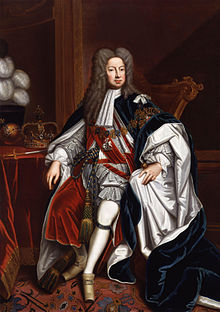
The coronation riots of October 1714 were a series of riots in southern and western England in protest against the coronation of the first Hanoverian king of Great Britain, George I.

The coronation riots of October 1714 were a series of riots in southern and western England in protest against the coronation of the first Hanoverian king of Great Britain, George I.
Upon the death in August 1714 of the last Stuart monarch, Queen Anne, George Louis, Elector of Hanover, ascended the throne in accordance with the terms of the Act of Settlement 1701 that excluded Anne's half-brother James Francis Edward Stuart. After his arrival in Britain in September, George promptly dismissed the Tories from office and appointed a Whig-dominated government.
On 20 October, George was crowned at Westminster Abbey, but when his loyalists celebrated the coronation, they were disrupted by rioters in over twenty towns in the south and the west of England. [1] The rioters were supporters of High Church and Sacheverellite notions. [1] The Tory aristocrats and gentry absented themselves from the coronation and in some towns they arrived with their supporters to disrupt the Hanoverian proceedings. [2]
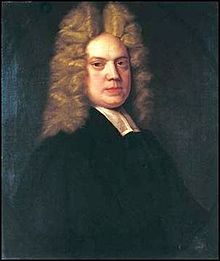
The celebrations of the coronation (balls, bonfires and drinking in taverns) were attacked by rioters who sacked their properties and assaulted the celebrants. Henry Sacheverell, who was on a 'progress' in the West Country, was mentioned by most of the rioters. At Bristol the crowd shouted, "Sacheverell and Ormond, and damn all foreigners!". In Taunton, they cried "Church and Dr. Sacheverell"; at Birmingham, "Kill the old Rogue [King George], Kill them all, Sacheverell for ever"; at Tewkesbury, "Sacheverell for ever, Down with the Roundheads"; at Shrewsbury, "High Church and Sacheverell for ever". In Dorchester and Nuneaton, Sacheverell's health was drunk. [3]
The High Church inspiration behind the rioters was also expressed in their attacks on Dissenters. In Bristol, a Dissenting meeting place was looted, with the murder of a Quaker, who had tried to persuade the mob to stop. A Dissenting meeting-house in Dorchester was "insulted", and there many expressions for local Tories among the rioters; in Canterbury they shouted "Hardress and Lee"; in Norwich, "Bene and Berney"; in Reading, "No Hanover, No Cadogan, but Calvert and Clarges". [3]
Along with those expressions of disaffection to the Hanoverian king were also expressions of Jacobite sentiments, despite that being a treasonable practice, according to the law. In Taunton, a Francis Sherry said on 19 October that "on the morrow he must take up Arms against the King". The Birmingham rioter John Hargrave said they must "pull down this King and Sett up a King of our own". In Dorchester, the rioters attempted to rescue an effigy of James Stuart that was to be burnt by Dissenters and asked: "Who dares disowne the Pretender?" In Tewkesbury l, the bargemen wished to drink to Sacheverell and the King but were criticised for putting Sacheverell first. The crowd replied that "it should be the King if they would have it so" but when asked which king, James or George, they attacked by them shouting, "Sacheverell for ever, Down with the Roundheads". [4] [5]
In Bedford, the maypole was put in mourning. It was a Jacobite symbol symbolising the 'vegetation god' motif of the Stuart monarchy and was associated with the connection between May day and Restoration Day. [6] [7] The rule of the Puritans from 1649 to 1660 had outlawed the maypole, and it was not until the Restoration of 1660 that it was brought back: "Remarkably, this aspect of the Restoration was still remembered fifty years later, and was quickly adapted to imply that Hanoverian rule was no different from that of the ‘puritans’", according to Paul Monod. [6]
In Frome, Somerset, the rioters "dressed up an Idiot, called George, in a Fool's Coat, saying, Here's our George, where's —". [6] [8]
The Anglican clergy mainly kept a low profile, but at Newton Abbot, the minister removed the bell-clappers so that the bells could not be rung in celebration of the coronation. [9]
The government did not trust local courts to prosecute the rioters and so tried to bring the rioters to London, but the scheme failed. Five rioters were brought to London from Taunton but were later released on bail. Seven Bristol rioters were to be tried by a Special Commission but it failed by prolonging the riot and was accompanied by an attack upon the Duke of Richmond at Chichester. [10] The rioters shouted at the judges: "No Jeffrey, no Western Assizes" and later: "A Cheverel, A Cheverel, and down with the Roundheads...up with the Cavaliers". A Tory merchant called William Hart (son of the Jacobite MP Richard Hart) was accused of being a ringleader of the rioters, but he escaped indictment. Other rioters were whipped, fined or imprisoned for three months. [11]
The general election of 1715, which was also accompanied by riots, produced a Whig majority in the House of Commons. In response to the riots, the new Whig majority passed the Riot Act to put down such disturbances.
Eleven days after the riots, Sacheverell published an open letter:
The Dissenters & their Friends have foolishly Endeavour'd to raise a Disturbance throughout the whole Kingdom by Trying in most Great Towns, on the Coronation Day to Burn Me in Effigie, to Inodiate my Person & Cause with the Populace: But if this Silly Stratagem has produc'd a quite Contrary Effect, & turn's upon the First Authors, & aggressors, and the People have Express'd their Resentment in any Culpable way, I hope it is not to be laid to my Charge, whose Name... they make Use of as the Shibboleth of the Party. [12]

Jacobitism was a political movement that supported the restoration of the senior line of the House of Stuart to the British throne. The name derives from the first name of James II of England, which is rendered in Latin as Jacobus. When James went into exile after the November 1688 Glorious Revolution, the Parliament of England argued that he had abandoned the English throne, which they offered to his Protestant daughter Mary II of England, and her husband William III. In April, the Scottish Convention held that he "forfeited" the throne of Scotland by his actions, listed in the Articles of Grievances.

George I was King of Great Britain and Ireland from 1 August 1714 and ruler of the Electorate of Hanover within the Holy Roman Empire from 23 January 1698 until his death in 1727. He was the first British monarch of the House of Hanover.

James Francis Edward Stuart, nicknamed the Old Pretender by Whigs, was the son of King James VII and II of England, Scotland and Ireland, and his second wife, Mary of Modena. He was Prince of Wales from July 1688 until, just months after his birth, his Catholic father was deposed and exiled in the Glorious Revolution of 1688. James II's Protestant elder daughter Mary II and her husband William III became co-monarchs. The Bill of Rights 1689 and Act of Settlement 1701 excluded Catholics such as James from the English and British thrones.

Francis Atterbury was an English man of letters, politician and bishop. A High Church Tory and Jacobite, he gained patronage under Queen Anne, but was mistrusted by the Hanoverian Whig ministries, and banished for communicating with the Old Pretender in the Atterbury Plot. He was a noted wit and a gifted preacher.
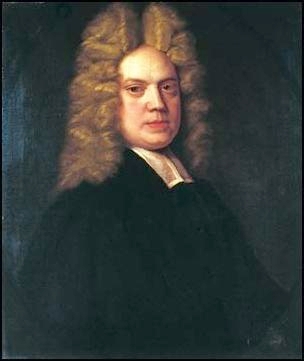
Henry Sacheverell was an English high church Anglican clergyman who achieved nationwide fame in 1709 after preaching an incendiary 5 November sermon. He was subsequently impeached by the House of Commons and though he was found guilty, his light punishment was seen as a vindication and he became a popular figure in the country, contributing to the Tories' landslide victory at the general election of 1710.
The Tories were a loosely organised political faction and later a political party, in the Parliaments of England, Scotland, Ireland, Great Britain and the United Kingdom. They first emerged during the 1679 Exclusion Crisis, when they opposed Whig efforts to exclude James, Duke of York from the succession on the grounds of his Catholicism. Despite their fervent opposition to state-sponsored Catholicism, Tories opposed exclusion in the belief inheritance based on birth was the foundation of a stable society.

Whiggism is a political philosophy that grew out of the Parliamentarian faction in the Wars of the Three Kingdoms (1639–1651). The Whigs' key policy positions were the supremacy of Parliament, tolerance of Protestant dissenters, and opposition to a "Papist" on the throne, especially James II or one of his descendants. It is associated with early conservative liberalism.
The Nonjuring schism refers to a split in the established churches of England, Scotland and Ireland, following the deposition and exile of James II and VII in the 1688 Glorious Revolution. As a condition of office, clergy were required to swear allegiance to the ruling monarch; for various reasons, some refused to take the oath to his successors William III and II and Mary II. These individuals were referred to as Non-juring, from the Latin verb iūrō, or jūrō, meaning "to swear an oath".
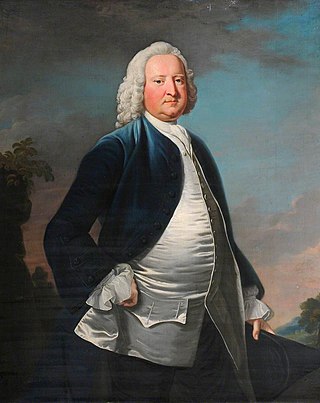
Sir Watkin Williams-Wynn, 3rd Baronet was a Welsh politician and landowner who sat in the British House of Commons from 1716 to 1749, when he died in office. A member of the Tory party, he was also a prominent Jacobite sympathiser. He helped engineer the downfall of Prime Minister Robert Walpole in 1742 and engaged in negotiations with the exiled Stuarts prior to the Jacobite rising of 1745 but did not participate in the rebellion himself. Watkin died in a hunting accident in 1749.

The 1710 British general election produced a landslide victory for the Tories. The election came in the wake of the prosecution of Henry Sacheverell, which had led to the collapse of the previous government led by Godolphin and the Whig Junto.
The Jacobite uprising in Cornwall of 1715 was the last uprising against the British Crown to take place in the county of Cornwall.

The Sacheverell riots were a series of outbreaks of public disorder, which spread across England during the spring, summer and autumn of 1710 in which supporters of the Tories attacked the homes and meeting-houses of Dissenters, particularly those of Presbyterians, whose congregations tended to support the Whigs. The Sacheverell and Rebellion riots are regarded as the most serious instances of public disorder of the eighteenth century, until, perhaps, the anti-Catholic protests of 1780.

The Jacobite rising of 1745, also known as the Forty-five Rebellion or simply the '45, was an attempt by Charles Edward Stuart to regain the British throne for his father, James Francis Edward Stuart. It took place during the War of the Austrian Succession, when the bulk of the British Army was fighting in mainland Europe, and proved to be the last in a series of revolts that began in 1689, with major outbreaks in 1708, 1715 and 1719.

William Shippen was an English Jacobite and Tory politician who sat in the House of Commons from 1707 to 1743.
Eveline Cruickshanks was an historian of seventeenth- and eighteenth-century British political history, specialising in Jacobitism and Toryism. She was of English, Scottish and French descent. She was an Honorary Fellow of the Institute of Historical Research of the University of London.
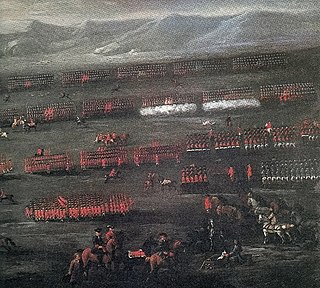
The Jacobite rising of 1715 was the attempt by James Edward Stuart to regain the thrones of England, Ireland and Scotland for the exiled Stuarts.

The Atterbury Plot was a conspiracy led by Francis Atterbury, Bishop of Rochester and Dean of Westminster, aimed at the restoration of the House of Stuart to the throne of Great Britain. It came some years after the unsuccessful Jacobite rising of 1715 and Jacobite rising of 1719, at a time when the Whig government of the new Hanoverian king was deeply unpopular.

In the spring and summer of 1715 a series of riots occurred in England in which High Church mobs attacked over forty Dissenting meeting-houses. The rioters also protested against the first Hanoverian king of Britain, George I and his new Whig government. The riots occurred on symbolic days: 28 May was George I's birthday, 29 May was the anniversary of Charles II's Restoration and 10 June was the birthday of the Jacobite Pretender, James Francis Edward Stuart.
When the king enjoys his own again is a Cavalier ballad written by Martin Parker during the English Civil War. It was later adopted by Jacobites. According to the historian Dr. Bernard Capp, this song was perhaps the most popular song in mid-seventeenth century England. The eighteenth century critic Joseph Ritson called it "the most famous and popular air ever heard in this country".
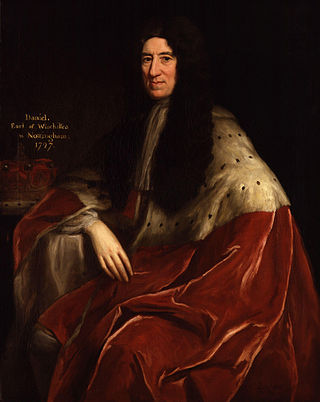
Hanoverian Tories were Tory supporters of the Hanoverian Succession of 1714. At the time many Tories favoured the exiled Jacobite James Francis Edward Stuart to take the British and Irish thrones, while their arch rivals the Whigs supported the candidacy of George, Elector of Hanover.